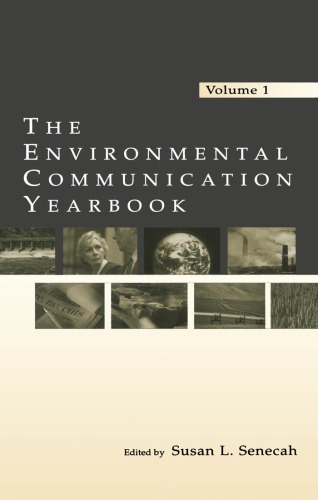

Most ebook files are in PDF format, so you can easily read them using various software such as Foxit Reader or directly on the Google Chrome browser.
Some ebook files are released by publishers in other formats such as .awz, .mobi, .epub, .fb2, etc. You may need to install specific software to read these formats on mobile/PC, such as Calibre.
Please read the tutorial at this link: https://ebookbell.com/faq
We offer FREE conversion to the popular formats you request; however, this may take some time. Therefore, right after payment, please email us, and we will try to provide the service as quickly as possible.
For some exceptional file formats or broken links (if any), please refrain from opening any disputes. Instead, email us first, and we will try to assist within a maximum of 6 hours.
EbookBell Team

4.4
22 reviews
ISBN 10: 0415652383
ISBN 13: 9780415652384
Author: Susan L Senecah
Editorial Scope The Environmental Communication Yearbook is a multidisciplinary forum through which a broad audience of academics, professionals, and practitioners can share and build theoretical, critical, and applied scholarship addressing environmental communication in a variety of contexts. This peer-reviewed annual publication invites submissions that showcase and/or advance our understanding of the production, reception, contexts, or processes of human communication regarding environmental issues. Theoretical expositions, literature reviews, case studies, cultural and mass media studies, best practices, and essays on emerging issues are welcome, as are both qualitative and quantitative methodologies. Areas of topical coverage will include: *participatory processes: public participation, collaborative decision making, dispute resolution, consensus building processes, regulatory negotiations, community dialogue, building civic capacity; *journalism and mass communications: newspaper, magazine, book and other forms of printed mass media; advertising and public relations; media studies; and radio, television, and Internet broadcasting; and *communication studies: rhetorical/historical case studies, organizational analyses, public relations/issues management, interpersonal/relational dimensions, risk communication, and psychological/cognitive research, all of which examine the origins, content, structure, and outcomes of discourse about environmental issues. Submissions are accepted on an ongoing basis for inclusion in volumes published annually. Audience Researchers, scholars, students and practitioners in environmental communication, journalism, rhetoric, public relations, mass communication, risk analysis, political science, environmental education, environmental studies, public administrations; policymakers; others interested in environmental issues and the communication channels used for discourse and information dissemination on the topic. For more information and guidelines for submissions
Chapter One: Naming, Interpretation, Policy, and Poetry
Chapter Two: Social Practice and Biophysical Process
Chapter Three: Eulogy for Tobe West: On the Agitation and Control of a Salvage-Rider Timber Sale
Chapter Four: Blue Skies, Green Industry: Corporate Environmental Reports as Utopian Narratives
Chapter Five: The Rhetoric of the Autobiographical Voice in Women’s Environmental Narratives
Chapter Six: At the 20th Century’s Close
Chapter Seven: Dialogue and Deliberation in Environmental Conflict: Enacting Civic Science
Chapter Eight: A Sense of Self-in-Place for Adaptive Management, Capacity Building, and Public Participation
Chapter Nine: And the Beat Goes On: The Third Decade of Environmental Journalism
Chapter Ten: Reasoned Action in Environmental Communication Research: Demonstration of an Augmented Model
Chapter Eleven: Framing of Newspaper News Stories During a Presidential Campaign Cycle: The Case of Bush-Gore in Election 2000
Chapter Twelve: Nonverbal Ways of Communicating With Nature: A Cross-Case Study